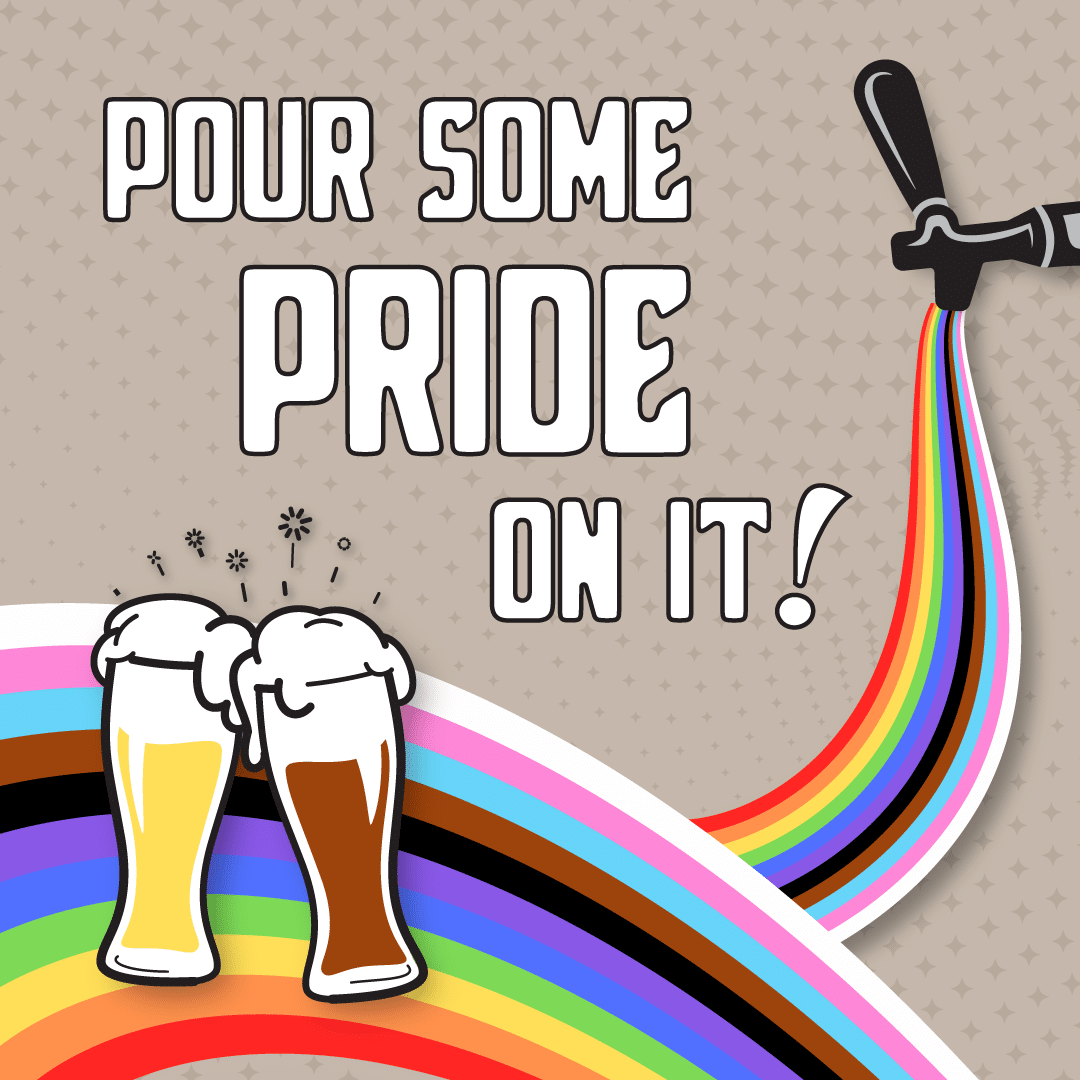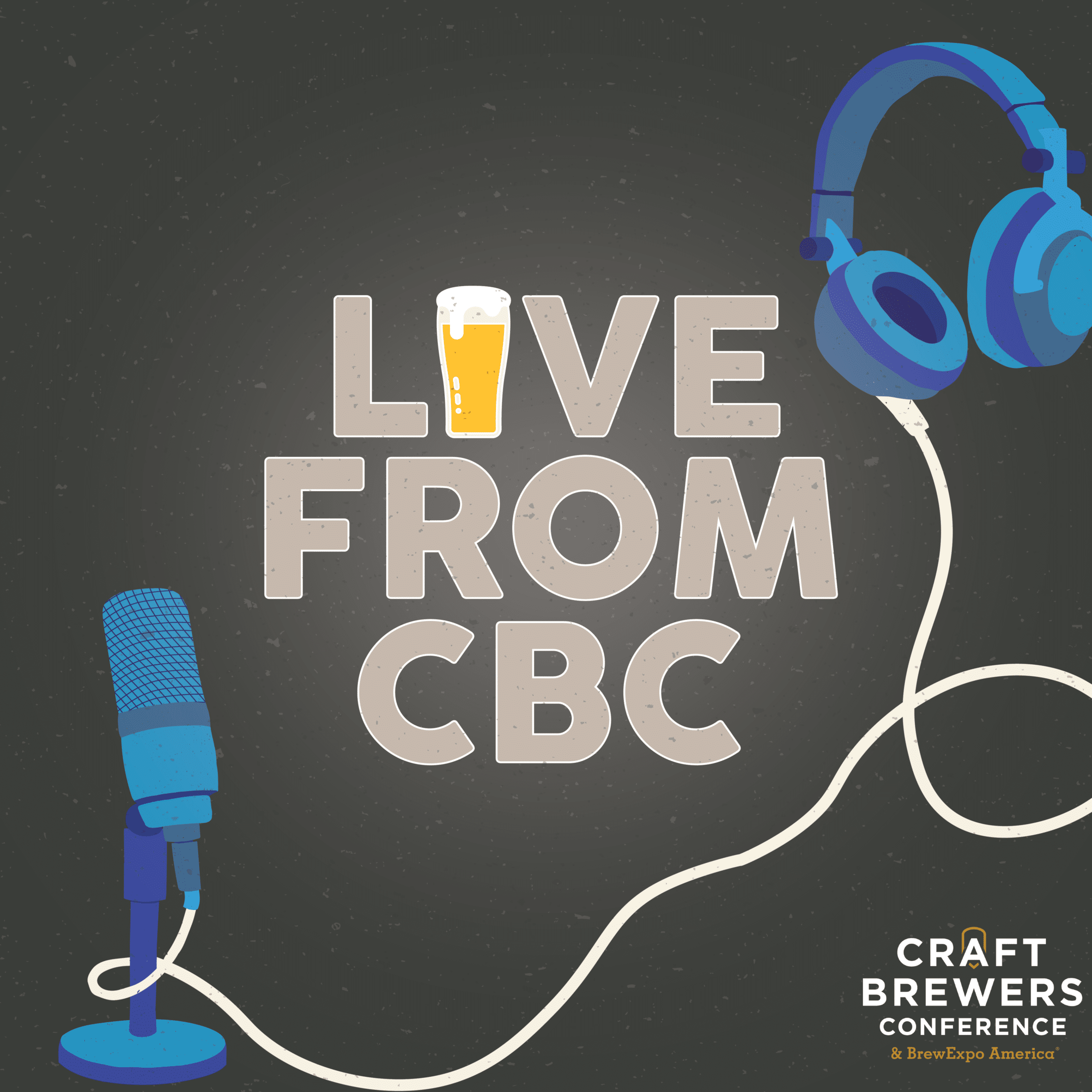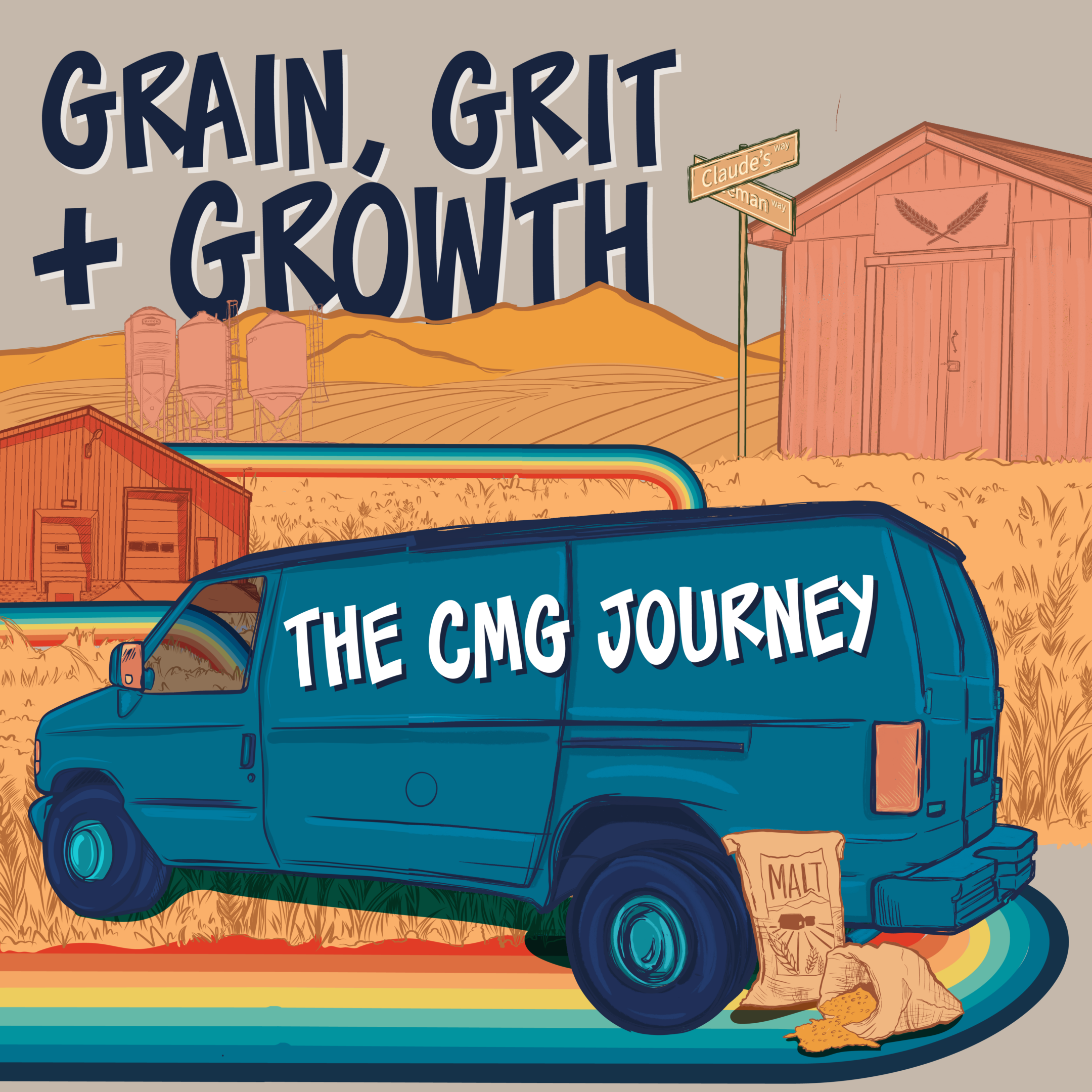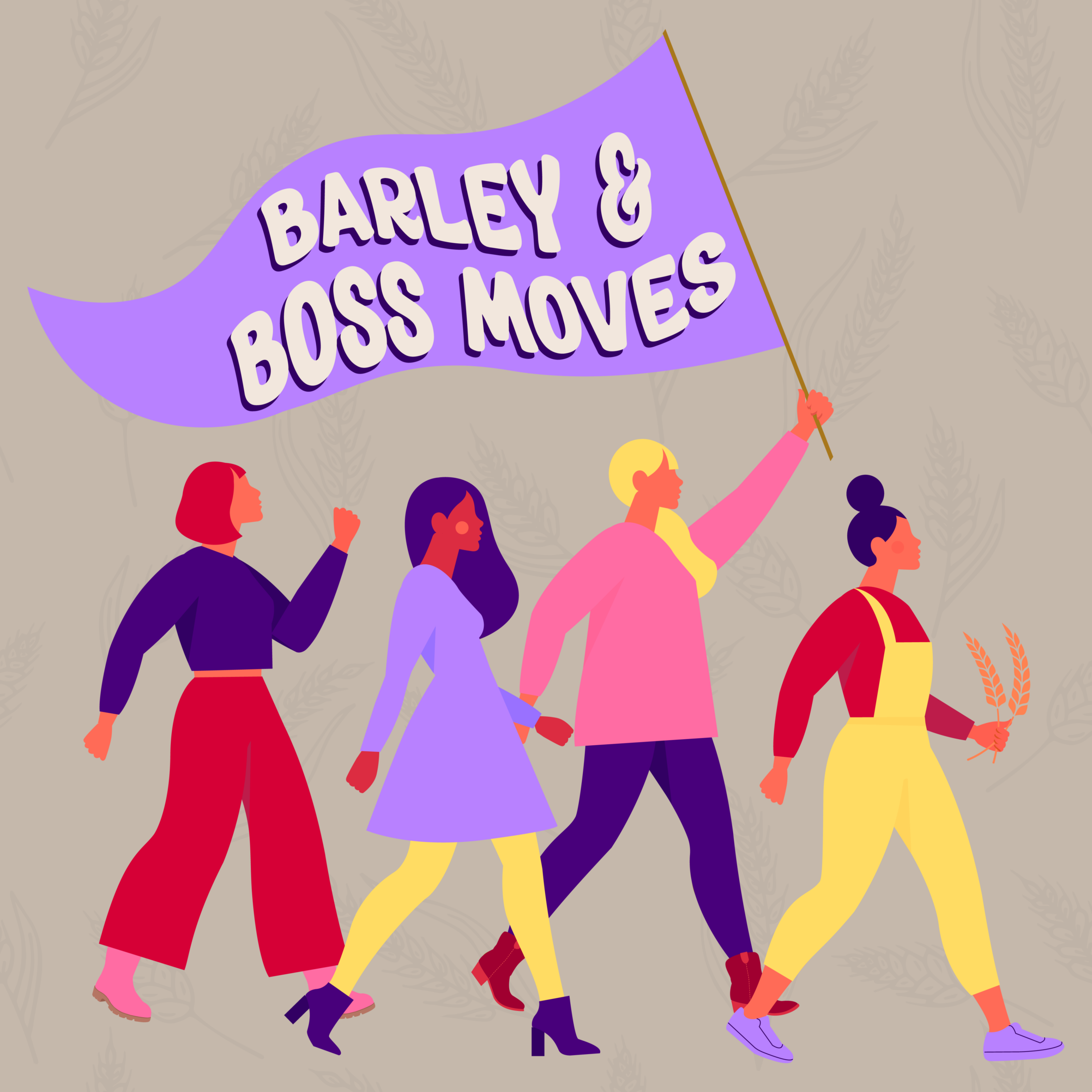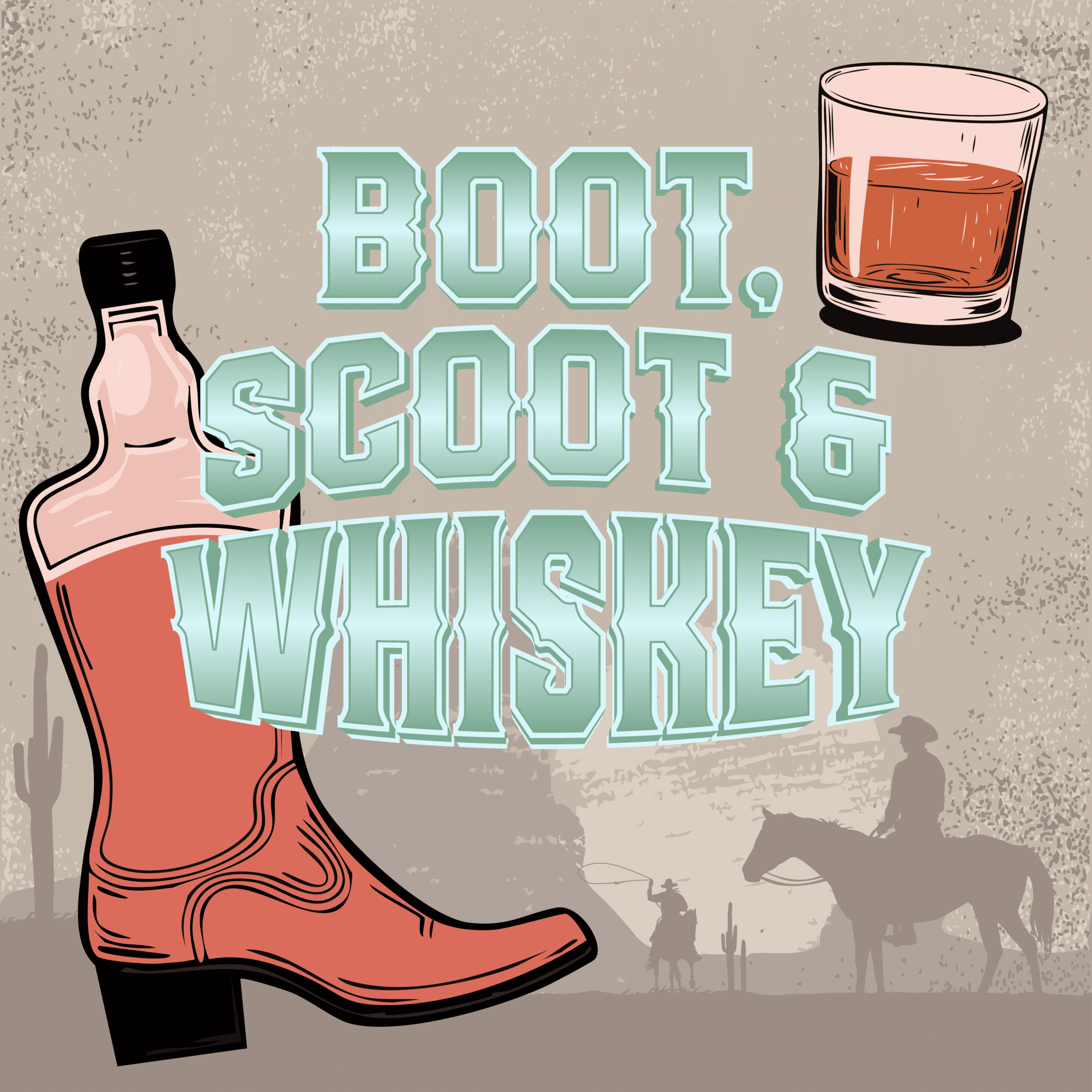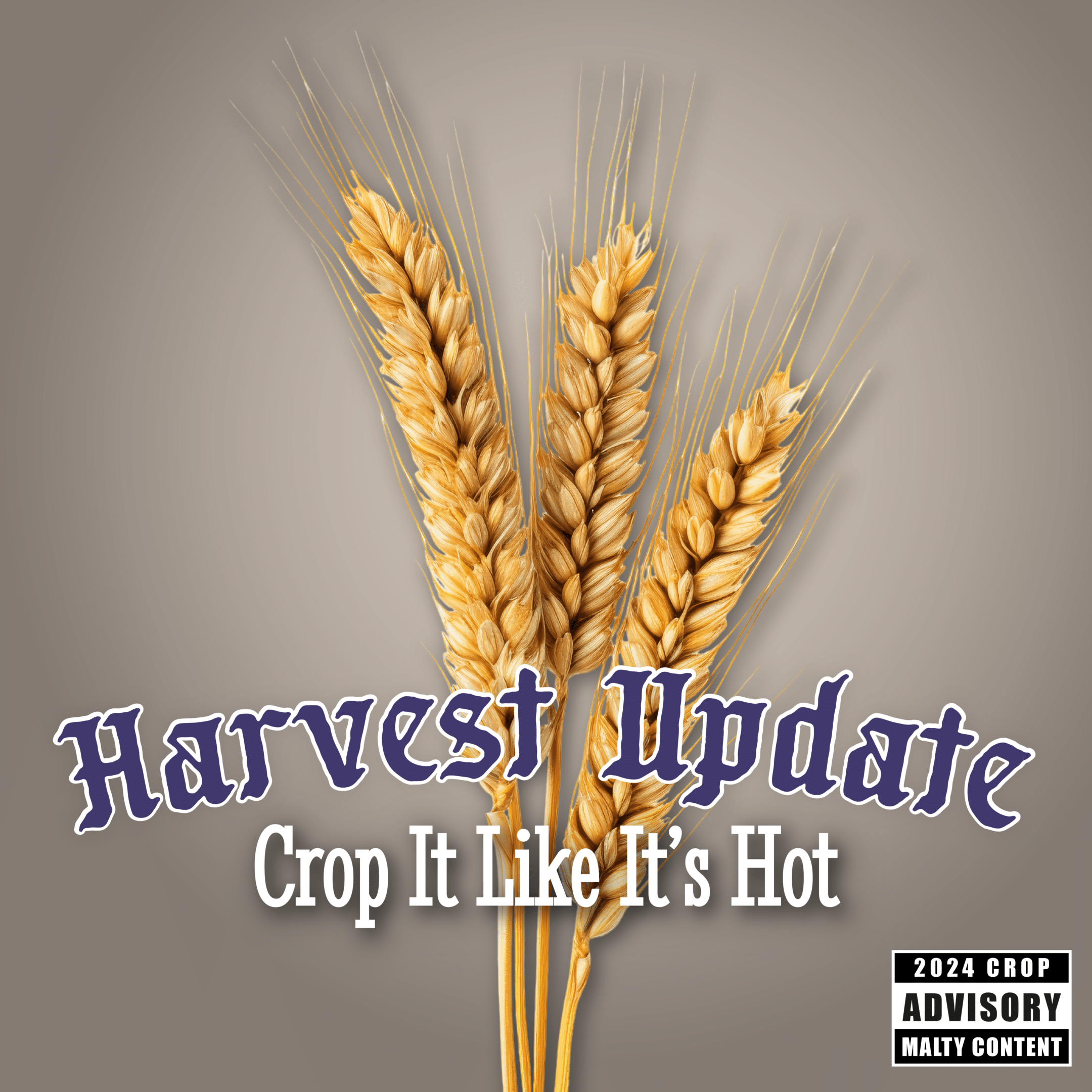
PODCAST GUEST
Jeff Erway
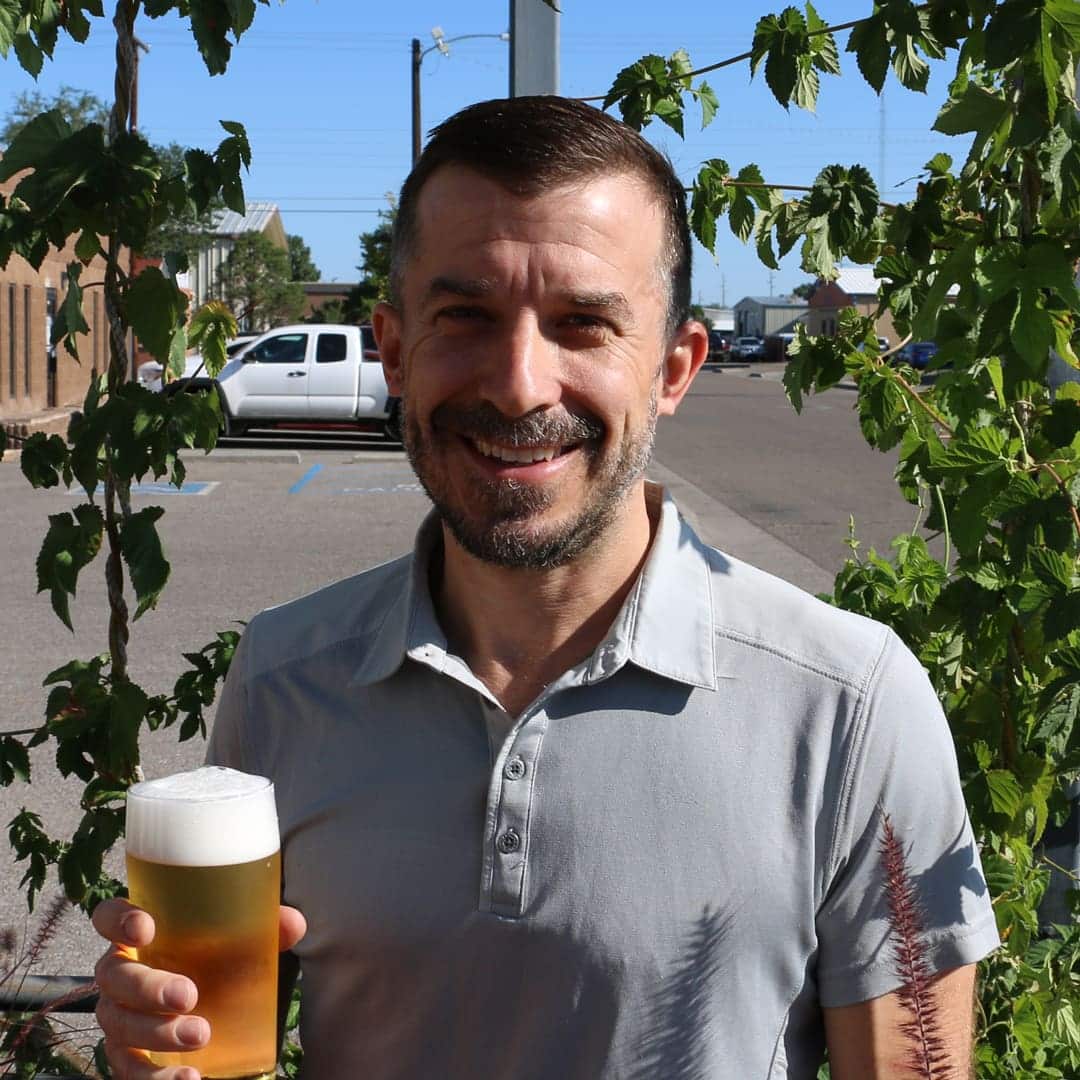
MORE EPISODES
SEASON 4, EPISODE 22: SAFETY IS NO ACCIDENT, PART 2
PODCAST HOSTS:
TOBY TUCKER – SALES DIRECTOR, COUNTRY MALT GROUP
ADAM WILSON – TERRITORY MANAGER, COUNTRY MALT GROUP
HEATHER JERRED – TERRITORY MANAGER, COUNTRY MALT GROUP
CHEYENNE WEISHAAR – SALES REPRESENTATIVE, COUNTRY MALT GROUP
GUEST:
JEFF ERWAY – FOUNDER, LA CUMBRE BREWING CO.
Key Points From This Episode:
- Jeff’s infamous brewing injury
- How it’s shaped the way he prioritizes safety
- What he hopes others learn from his story
- How the safety culture has evolved at La Cumbre
- How they get others involved in safety
- Tips for talking to your manager when you don’t feel safe
- The importance of PPE and safety wearables
Transcript - Safety Is No Accident
EPISODE S.4, E.22
[SAFETY IS NO ACCIDENT]
Toby (00:09):
Welcome back to The BrewDeck Podcast. This is part two of our two-part safety episode series. If you miss part one, go back and listen to that one first. We covered what safety means and how to influence a safety culture with Matt Stinchfield, authors safety consultant and safety subcommittee member for the Brewers Association. And we had a chat with Tiago Darocha, our United Malt COO, that is Chief Operating Officer. Today in part two, we’re going to pick up where we left off with Jeff Erway joining us. He’s from La Cumbre Brewing Company in New Mexico.
Heather (00:40):
And if you didn’t hear in part one, we are hosting a giveaway for Matt’s book, which is titled Brewery Safety: Principles, Processes, and People. If you listen to him talk about his book in part one, you’ll know how excited we are to get this book out into the hands of some of our listeners. So to enter, all you have to do is rate and or review The BrewDeck Podcast on Spotify or Apple Podcasts. Then submit a screenshot of your rating via the link in the episode notes. The giveaway does close October 3rd when we release our upcoming cleaning episode. The full details are in the episode notes as well, so please check them out.
Toby (01:16):
Yeah. And I’ll mention it again too. For those of the listeners out there that may be a little bit, I don’t know.
Heather (01:24):
Squeamish.
Toby (01:25):
Squeamish is the right word. We’re talking realistically and honestly about safety and some accidents that have happened. So for those that are a bit uncomfortable, you can always check out the show notes for timestamps to skip over certain parts. So just a bit of a disclaimer before we dive right in. Let’s do it.
Heather (01:42):
Let’s go.
Toby (01:44):
Well, we have the pleasure of being joined by the one and only Jeff Erway over at La Cumbre Brewing Company in Albuquerque. And Jeff, I haven’t talked to you in a long time. I’m happy and excited to finally get to chat with you. It’s been a while since I’ve been just perusing around up in your neck of the woods, but I miss you buddy. How are you doing?
Jeff (02:05):
I am pretty good. How are you doing, Toby?
Toby (02:09):
I’m pretty good. Pretty good. Hey, I appreciate your time jumping on, and it’s a subject that’s very important to our organization, and I know very important to many breweries out there. Before we get into the details, why don’t you just tell us a little bit about yourself. I know La Cumbre’s been around a long time, and it’s a staple out there in New Mexico and in other areas as well. So yeah, just a quick intro about yourself, kind of yeah.
Jeff (02:42):
Yeah. I’m the founder of a La Cumbre Brewing Company. I got into the craft beer industry after graduating from the American Brewers Guild. I was hired at Chama River Brewing Company rest in peace back in 2007. I worked there for about three years as the head brewer, got a chance to work with a lot of great brewers there. Was trained by a gentleman who ended up being one of the founders of Marble Brewery. And after about three years in that position, I decided to head off my own, started La Cumbre Brewing Company in 2010. Been doing it ever since. We’re distributed in Arizona, Colorado, and throughout New Mexico. Biggest part of our business is really self-distribution to Albuquerque and Santa Fe, and yeah, we obviously work with outside distributors outside of that. About 60% of what we produce is Elevated IPA. Yeah. And yeah, that’s our company in a nutshell. Got two tap rooms.
Toby (03:54):
Yeah.
Heather (03:55):
That’s the award-winning Elevated IPA, correct?
Jeff (03:58):
Oh, yes,
Toby (03:58):
Yes.
Jeff (03:58):
The award-winning Elevated IPA.
Toby (04:01):
He’s very humble if you don’t know Jeff.
Heather (04:02):
Yeah.
Toby (04:02):
Yes. But yeah, you guys,
Jeff (04:03):
Yeah. That’s definitely what I’ve been accused of.
Toby (04:08):
No, you guys have made some really, to be honest, with some kick beers over the years.
Jeff (04:12):
Thanks.
Toby (04:12):
And you all do a fantastic job, and the times I make it up to that area, I enjoy supporting you all, so.
Jeff (04:21):
I appreciate it.
Toby (04:22):
The other thing you mentioned too and it’s for a completely different topic show is self-distribution of that level, of that magnitude. I won’t pick your brain on that, but yeah, it’s pretty wild.
Jeff (04:34):
I’ll hand you over to my director of sales for that one. He’s the one that’s led that whole operation.
Toby (04:45):
Yeah. It seems like sticky.
Jeff (04:45):
It’s 15 people now and just doing it all day long every day. But yeah, a lot.
Toby (04:51):
My God. Yeah. Well, congrats on the success and continued success.
Jeff (04:56):
Thank you.
Toby (04:57):
Yeah. One of the things that specifically brought your name up in my head when we were having some prep meetings on this particular show around safety was you and I used to call on you back in the days when I was boots on the ground here. And I remember you sharing a story that was pretty impactful to not only me, and I think you shared it to quite a few other folks, at least as far as the New Mexico Guild is concerned, I believe. But I thought about bringing you on and talking about that particular story and then how that shaped what you do in-house on the safety side. Can you tell us a little bit about that?
Jeff (05:39):
Yeah. What we do in-house on the safety side now, I’m a firm believer that if OSHA comes a calling, the chances are they’re going to find stuff that you’re not doing right, and I don’t think that they’re out there just to play gotcha. But they didn’t come to your facility to not find some things that you can improve upon. But it’s kind of like any other inspector that comes into my facility. You can worry about that inspector and the finds that they might levy on your organization or you can worry about how you sleep at night. And I feel like Daniel, my director of brewery operations, Alan, my head brewer and I are all really focused on finding those things that could potentially wake us up in the middle of the night to a horrific news. And that, I guess I try to approach safety as much from that perspective as anything else because that means a lot more to me.
(06:40)
But as far as the specific story that has become, certainly not legend, but it’s driven eye safety for sure at La Cumbre was probably about end of 2012. It was about 10:30 at night, and I was finishing up the brew day, and I was late shift, and I was starting my CIP and filling the, I think it was 30 gallons of hot water into the kettle to do the CIP on both the heat exchanger and the kettle. And we were using caustic soda to clean it, obviously. And I think at this point, I feel like eye safety, it’s kind of putting your seatbelt on when you get in the car. Luckily, most cars nowadays have those bing, bing, bing, bing. You try to drive the car without the seatbelt on, it’s going to let you know, and it will not stop letting you know until you put the seatbelt on.
(07:46)
Well, I wish somehow I could do the same thing with eye safety because I still catch myself going onto the brew house floor sometimes without my safety goggles and every time I’m like, stop, turn around, go back to your office to get googles. But I didn’t have them on, and I was pouring caustic into the kettle, and the hot liquor was coming in at a pretty high rate of speed, faster than I thought it was, and I just did what I would’ve with any sink. I just kind of rinsed out the measuring cup that had caustic in it with the water coming into the kettle. That was truly profoundly stupid. And what ended up happening was I got splashed right back in the face with 190 degree water mixed with a very high concentration of sodium hydroxide. I did have an eyewash station, but I had to travel down the stairs from the brew deck and get over to the eyewash station and rinsed it the very best I could.
(08:49)
And I was like, whatever. It’s fine. I’m fine. It hurt a little bit, burned a little bit, tickled, but I rinsed it really well, at least I thought I had. Finished up my brew day, and I went home and my wife saw me and my one eye was completely bloodshot to the point where she barely could tell where the pupil and whatever, I’m not an eye surgeon and I don’t know the different parts of the eye. But she convinced me I absolutely needed to go to the emergency room.
(09:24)
And I went to the emergency room. And once I got in, oh, surprisingly enough, they took me right in when they saw my eye, and proceeded for the next four hours to flush about six gallons of saline solutions through my ocular cavity, which drained down into my sinuses, which I don’t know if you’ve ever, most people have never experienced this, but basically they have like a contact lens that has a tube going into it, and they just flood your ocular cavity. And because that drains down into your sinuses the whole time, I felt like I was feeling like I was being waterboarded. It was truly one of the worst experiences of my life. It was absolutely horrendous. And the doctor on duty at that time came in afterwards and asked me how I was feeling. I was like, I’m feeling a lot better. My eye feels great. She’s like, yeah, it’s because just doused it in cocaine. I was like, really? Cool.
Heather (10:25):
I’m sorry. I’m sorry. Eye cocaine?
Toby (10:29):
I’m trying to envision that. Yeah.
Jeff (10:31):
Yeah. Yeah. I mean, so apparently liquid cocaine drops are what they use for really bad eye discomfort. I’m not sure why that was, but at least in 2012 that was, they sent me home with a bottle of,
Toby (10:48):
I’m looking that up Jeff.
Jeff (10:49):
Basically a saline solution with small amount of cocaine in it.
Heather (10:51):
Wow.
Toby (10:51):
I don’t know if I believe that. I got to look it up.
Jeff (10:56):
In any case, and she showed me some images, basically showing me where the chemical burn was. And she said, I can’t tell what’s chemical and what’s heat, but it’s a burn. And she said, and you missed your retina by about two, three millimeters. She said, if you’d hit that, you’d be without vision for the rest of your life. I still feel like my left eye, that I have, according to my wife, and most people that have been in a car with me have got some of the best vision anybody’s ever witnessed.
(11:35)
But I definitely feel that my left eye ever since then has not been nearly as acute as it had been. But needless to say, the picture of me with that contact lens looking thing with a tube going into it, there was a picture of it like 10 different places around my brewery for the next five years just saying, are you wearing your eye protection? And I would tell that story to just about everybody that was hired on. As soon as I saw them trying to do anything without their eye protection on, I would tell them that story.
Heather (12:16):
Just scare them into it.
Jeff (12:19):
Yeah. Well just tell them like, look, I don’t want you to lose your vision.
Heather (12:22):
Oh, yeah.
Jeff (12:24):
I don’t want that to ever happen to you.
Heather (12:24):
Yeah. And you’re very, very lucky.
Toby (12:26):
Yes.
Jeff (12:27):
Oh, yeah. Super lucky.
Toby (12:29):
Yeah.
Heather (12:30):
How would you say, well, I mean, I think it’s kind of obvious, but how would you say this has shaped the way that you view safety at the brewery since?
Jeff (12:39):
Well, I value my own safety way more than I used to. Yeah. And it also clues you into, you always hear the stories of pre OSHA brewers. You wouldn’t find one in a tank, you’d find two, and you’re like, yeah, yeah, yeah. We don’t climb into tanks anymore. I mean, certain brewers do actually. I was just in the Czech Republic, and they still do that but. And so you always hear the dangers of carbon dioxide exposure. You hear the story about Teri Fahrendorf and the hot liquor accidents she had back in the 80s. But when I got into the industry, I feel like the people, my mentors, they did a good job of telling me to wear gloves when I was handling, when was pumping caustic from a 55 gallon drum into a one gallon container. They did a good job of instilling in me that you wear boots, that you don’t wear shorts. But man, I don’t feel like anybody really covered as well as they should have, or at least didn’t put the fear of God in me about eye protection. And our eyes are pretty damn important.
(14:00)
I’d be pretty upset right now. I’d be a lot more upset right now if I had lost vision in my left eye because of that. But yeah, it’s something I think about every day. Even non brewery staff members when they go back into the brewery because of that, there’s signs everywhere. Don’t come in here without eye protection. And then they, for the most part, follow it. And sure, at least a couple times a week, I tell somebody, Hey, put your goggles on, put your eye protection on. But there’s obviously at the chemical stations, there’s face shields and full arm length gloves and stuff. But yeah, I feel like there still hasn’t been enough emphasis on eye protection. And it shocked me. A few months ago, I was in another country, which will remain nameless that I was taking a tour of a bottling line and they, I swear to God, they did not have eye protection on, and I was just baffled. Like here’s this huge bottling operation with dozens of employees running this bottling line. That there’s no eye protection anywhere. And I’m like, oh my God.
Toby (15:27):
We’ve seen it. I’m sure Heather can attest, but in our 10 plus years of just roaming around in breweries, I’ve seen some very, very large reputable brewers that you take people back there, they’re not wearing eye protection, they’re wearing shorts, some of them wearing flip-flops, and it’s crazy. But yeah, the eye protection, you’re absolutely right, is a big thing, not just because you had the experience there, but it’s something that I think a lot of people overlook. As simple as mowing the grass, right? I mean, I’ve been hit by rocks up in the face area that got really close to my eye, and I think, whoa, if that was one inch to the left, I’d probably have a bad eye issue. Right. So.
Jeff (16:16):
Oh man, I was trying to take apart a faucet the other day, and my safety goggles were fogged up, and I just put them up on my forehead while I put this faucet in the vice grips, and I took some channel locks to kind of pry the bonnet out. And sure (bleep) as soon as I took my safety goggles out, and this happened just a month ago, and I got smacked right up beside my temple because I prided it, and all of a sudden it shot loose and wham right into my temple. And I sat there thinking to myself, I can make all the excuses I want in the world. I absolutely deserve that. That was really stupid. And if I had been wearing my goggles, first of all, it probably would’ve protected my temple a little bit. Second of all, if that had been just a little bit further to the right, I would’ve been in a world of hurt.
Toby (17:19):
Yep. Yep.
Heather (17:20):
You think, this is kind of a random one, but do you think you’ve always kind of looked out for, you said about taking your personal safety a bit more serious. Do you think you would’ve looked at somebody else not wearing their goggles and been like, what are you doing and then looked at yourself and just not really thought about it?
Jeff (17:34):
Yeah, absolutely. It’s very easy to, especially because as the owner, I’m not covered under workers’ compensation. I’m also not covered under OSHA. OSHA can fine me for everything else that everybody else is doing, and my workers’ compensation can get on my case about everything everybody else is doing. But if I wanted to wear tidy whiteys on my scissor lift without a harness and go up there in flip-flops and clean the tank without any eye protection on, there’s really nothing anybody else can do about it.
(18:12)
It’s just that, yeah, I value my safety more than that nowadays. But I still to this day have to constantly remind myself, don’t step on the floor without gobbles on. Don’t step on the floor without close toed shoes and stuff. Not that I ever. I never wear flip-flops when I work, obviously. But yeah, no, there’s all sorts of things I have to constantly remind myself of, and it’s very easy to look around your brewery. And pick apart what other people are doing because as the supervisor, that’s kind of what you’ve trained yourself to do, but it’s a lot harder when it’s yourself.
Toby (18:52):
Yeah. Tidy whitey’s on a scissor lift.
Jeff (18:55):
Yeah, there you go.
Toby (18:56):
I want to say, have you ever done that?
Jeff (18:58):
No.
Toby (18:58):
Let’s be serious.
Jeff (18:59):
No.
Toby (18:59):
Okay.
Jeff (19:00):
No, no. I have seen a brewer with nothing but tidy whiteys on,
Toby (19:08):
Oh.
Jeff (19:09):
In a brewery, but in their defense it was 125 degrees in that brewery.
Heather (19:10):
But I was going to say to our listeners, these are not recommendations.
Jeff (19:14):
And they were wearing knee-length rubber boots as well.
Toby (19:21):
Still doesn’t make it right.
Heather (19:22):
Does not make it connect.
Toby (19:23):
Visually right. No.
Heather (19:25):
Visually or safety wise,
Toby (19:26):
No.
Heather (19:26):
Probably not the best [inaudible 00:19:28].
Toby (19:30):
Well, yeah, it’s a story and it’s one of those that I’m sure just you paid attention to safety before, but after this, it’s probably, as you mentioned, it’s more focus and thinking about it more often than you probably would have. But as far as La Cumbre, I’m assuming since then things have kind of evolved and more emphasis has been placed. You mentioned on eyewear, but how do you ensure, you mentioned just other protocols. Do you have safety guidelines posted? You just have a picture of your cocaine eye sitting everywhere. So how do you make sure that your staff is completely aware of all hazards and making sure they’re keeping themselves safe so they can go home at night?
Jeff (20:26):
Yeah, we have a preventative maintenance contract with our forklift, with the company we purchased our forklifts from, and that includes yearly trainings for everybody on forklift safety. We’re pretty intense about it just because obviously the number of times that somebody’s not operated a forklift in a safe manner, and we’ve lost a pallet of beer or lost pallets of cans and such. But in addition to that, what’s happened at a few commercial breweries in the last 10 years is not lost on us. I think the people that start talking, and Matt will tell you everything that you want to know about the kind of fines that OSHA can levy upon you. That is the last worry in my mind about safety. I’m always scared to death about hearing that somebody really maimed themselves or worse in my facility.
(21:40)
So scissor lift, obviously we don’t get up on a scissor lift at all without harnessing, and you don’t leave the scissor lift onto the tank until you’re harnessed onto the tank. We have CO2 alarms on every cold room with any kind of CO2 service to them. So obviously any draft cold rooms, either one of our taprooms or the conditioning tanks in our brewery where there’s a lot of CO2 running, got CO2 alarms around the canning line. I’m a big one for CO2 alarms because I’ve got another pretty petrifying story about my first job and PVRV going off all night and going into the,
Toby (22:28):
Oh, no.
Jeff (22:29):
Almost blacking out. So we install CO2 alarms.
Heather (22:35):
That happened to a friend of mine in their brewery as well, and they were alone.
Toby (22:36):
Did it?
Heather (22:37):
Yeah. And good thing he kind of caught what was going on with himself and got himself outside and did call 911, and he ended up having to spend a lot of time in the hospital.
Toby (22:47):
Oh, that’s scary. Yeah, it’s so scary.
Jeff (22:48):
I didn’t have to spend any time in the hospital, but I collapsed.
Heather (22:50):
Oh, geez.
Toby (22:51):
Oh, man.
Jeff (22:52):
It scared the crap out of me.
Heather (22:54):
See, you’ve been learning the hard way along the way.
Jeff (22:56):
Yeah. Yeah.
Heather (22:56):
Yeah.
Jeff (22:57):
I’ve learned hard way a bunch. But yeah, so like I said, any one of us that thinks we’re going to get through an OSHA inspection unscathed, without any warnings, fines or whatever, that to me is completely secondary to the safety of everybody on staff. I desperately want to make sure that people go home at night and that their loved ones don’t wake up to find out the worst.
Toby (23:36):
Yeah, absolutely. And we’ve been talking a lot on prepping for this episode specifically. A lot of it’s about culture. Right. It’s about it starts at the top and you support each other and look out for each other. And I’m going to get to that in a second, but I did want to also mention, we talked a lot about brewery safety, but there’s also some concerns in I think front of house. The service staff that’s serving over the bar has got to be very cognizant of safety as well. And the first thing I think of is just over-serving patrons, number one. Right. There’s glass, there’s a lot of different things that can happen in the front of the house. So what about at your taproom, in your taprooms, I should say, Jeff, like it’s something that your staff and crew has to always be on the lookout for. Right. I mean, an accident for any reason can happen while people are sitting around enjoying a beer.
Jeff (24:39):
Yeah, I mean, I think our single biggest workers’ compensation claim was fairly early on. An employee that dropped a glass and slit his hand open pretty bad. I want to say he had 12 stitches. Is he maimed for life? No, he’s fine. Still works for me. And could we have done something to stop that? Probably not. That one was probably unavoidable, but obviously boxing up any broken glass, not putting it into a plastic bag or a container without being in a cardboard box. I think it’s pretty standardized across the industry. Hopefully it is. People know to do that.
(25:29)
As far as service of customers, the state of New Mexico has made it abundantly clear to bar owners time and time again that the Supreme Court will always side against the bar owners. When someone gets overserved, they’ll almost never hold that person civilly liable. So the fact is, is that beyond the public shaming, the knowledge that you might’ve contributed to somebody injuring or killing another person out on the road, I think I just decided early on I didn’t really want to expose my servers to really trying to have to address it all that much. And I wanted to make sure that the 82-year-old guy that came into my taproom every afternoon at three o’clock to have a couple beers still felt comfortable coming in there. I wanted to make sure my wife felt comfortable bringing our kids in.
(26:40)
So we just had a hard and fast three drink limit from the very beginning. And I know tons of people see that, and they’re like, why in the hell do you have that rule? Do you not like money? I get it. I like money, I promise, but it kind of sets the tone for the taproom not being a place to get all schwasty. And I try to have that tone set for also the professionalism of my staff when they go and enjoy a pint in our taproom that they themselves have to hold themselves to account like that too. But I wanted to set the tone early on that’s just not the place to get drunk. And there are plenty of bars around town that’ll let you get drunk. Mine’s not one of them.
Toby (27:33):
Yeah.
Jeff (27:34):
But beyond that, my taproom staff at the brewery are going into the brewery on a daily basis to do all sorts of things. That’s where a mop sink is. So I pass out a quick, easy to read sheet on the different chemicals that they might find themselves exposed to. Not anything like an MSDS sheet that 99.9% of people are never going to read, but something that is a page that lists all the different chemicals, what they smell like, what they look like, what they feel like, what you need to do if you truly are exposed to them.
Toby (28:15):
Yeah, it’s actually in English, and I’m glad you mentioned that because MSDS like hell, I can’t understand what half of those say anyway, so you’re right. Something that the normal person can understand, like this is how it can hurt you, this is how it can affect you. Yeah, I like that.
Jeff (28:30):
Yeah. And obviously let them know about the CO2 alarms and there’s shutoff valves outside each cold room to turn off the supply of CO2 in case of those alarms are going off and they know to open the door and let it vent until the alarm shuts off. So yeah, you’re right. There’s absolutely dangers for front of house staff as well. And then obviously we run ourselves, self distribution, which means,
Toby (28:57):
Oh, yeah.
Jeff (28:58):
We’re cleaning draft lines every day. Truly one of the, from an eye safety standpoint, probably one of the more dangerous jobs you can do. But,
Toby (29:09):
Sure.
Jeff (29:10):
We’ve, have to fully train those guys and gals on that. Wearing proper vinyl gloves while they’re working and we’re often doing caustic and then followed by an acid cycle followed by PAA. So yeah, there’s all sorts of chemicals they got to be trained on.
Toby (29:35):
Yeah, I didn’t even think about it and you got people in vans or trucks distributing product, and you talk about safety hazards everywhere out on the road. No.
Jeff (29:46):
You ever seen what peroxyacetic acid will do to the floor of a van?
Toby (29:52):
I have not.
Jeff (29:54):
It’ll eat right through it.
Toby (29:56):
Oh, geez.
Jeff (29:58):
One of our old vans literally had a hole growing right through to the ground,
Toby (30:03):
Oh, gosh.
Jeff (30:03):
Because of a spilled PAA bottle. I mean, on top of that, he had to literally clear out of the thing because anybody who’s ever spilled PAA knows exactly what happens. It fills the room with just a really noxious gas. But yeah, that was entertaining, I guess if not completely petrifying what it did to raw metal.
Toby (30:25):
Yeah. Well, going back to in front of the house, and Heather, you and I, I don’t think we talked about it in our prep, but I’ve been into breweries and sat at the taproom where you order like a double IPA, I don’t know, like an eight and a half, 9%, and they serve it in a pint glass or some giant glass. Right.
Heather (30:49):
But yeah, that’s not responsible. Sorry.
Toby (30:51):
No, I think it’s a mistake. Like some restaurants and hopefully most breweries are smart enough to think about, Hey, if we’re serving high ABB stuff, we’re not going to put it in a 16 ounce glass because that can quickly, and part of that I think falls on the responsibility of the brewer as well. Right. If you have someone that’s not completely up to speed as far as a beer drinker lover, right, can come in like, oh, this is good. Some beers are so well-made. And Jeff’s, his crew is probably one of them too. You go in there and it’s not cloyingly alcoholic, right? So you could pound a 16 ounce, nine and a half and not even know it. So something else to think about. So Jeff, going back,
Heather (31:38):
Sorry. Your barley,
Toby (31:39):
Yeah, no go ahead.
Heather (31:40):
Should not be served in the same glass as your pilsner. Just shouldn’t be a thing.
Toby (31:47):
Oh, no. So yeah, we talked a little bit about, early about culture and for our listeners out there, and some of them may, for lack of a better term, be kind of on a lower end of the totem pole. But do you have any tips out there for those people who don’t feel safe in their brewery, don’t feel like they have a voice, any words of wisdom or something that you would tell them about safety and when you’re concerned to raise your hand and say something about it?
Jeff (32:26):
Yeah, I think olden day, back in the dark ages of brewing, I think a lot of owners kind of looked the other way slash condoned and a lot of brewers for director of brewery operations slash brew master, slash head brewers tolerated, condone, encourage drinking on the job. And I think one of the things that I feel like has seriously improved in the last 15 years is that has become more and more unacceptable behavior. And I think it should be considered such because I think if we’re truly professionals, we need to act professional and drinking on the job’s just not something that professionals do. And I think part of company culture and setting that tone for not only the people that you’re supervising, but also the people that are higher up is shown that you do take your job seriously and you are professional and that they need to be too.
(33:25)
And I’d say one of the biggest steps forward that’s happened probably in my industry the last 15 years is just that kind of behavior has become quite a bit more of verboten, and I’m glad to see it and I used to go into very large breweries and see people on the packaging lines, which were back then, all bottling lines, some of the most dangerous pieces of equipment that you can imagine, and they were drinking while they were packaging. And I was just like, oh my God, this is shocking. But to directly speak to your question, I think if you feel like your supervisor doesn’t value your safety, then you need to leave. But I think about it to the idea of an OSHA fine or something like that. Everybody is all nervous that OSHA will come in and you’ll get 50,000, 60,000, whatever, $1000 fines those, just to use the keg accident that happened at Red Hook, the plastic kegs America accident that happened at Red Hook a bunch of years back.
(34:42)
Let me tell you. The OSHA inspection that happened afterwards, and the fines that were levied were a infinitesimally, small pittance compared to what happened with the civil lawsuits having to do with that accident. And that goes for every safety accident there is. If you can’t on the moral ground, say that it’s the best thing for your business, the best thing for your company, the best thing for your employees to have a safe company culture and to make safety part of your company culture, how about the health and stability and sustainability of your business? Because if somebody dies on your property or somebody is truly maimed on your property, I mean, if that happened to me, 52 employees would be out of a job and I’d probably be losing my house.
(35:31)
So if the whole moral argument doesn’t work all that well for you, how about the sustainability of your business? Business owners need to understand that. And if they don’t understand it, well, they need to speak to an attorney and the attorney will help them understand it well, like what kind of liabilities are on us to make sure that we have safe workplaces for both our customers and our employees.
Toby (36:01):
I’m clapping over here. I’m raising the hands. That’s awesome.
Heather (36:06):
Yeah.
Toby (36:06):
Very honest and something that people need to hear, for sure. Yeah. So we talked about eyewear, right? And you call them goggles, safety goggles, safety glasses, we mentioned long pants. Is there any other items that you can think of that are must haves that don’t typically come to mind?
Jeff (36:28):
I don’t require brewers wear rubber boots. And I’m talking about the kinds that are steel toed and full wrapped rubber boots. I wear them myself. I like them. I like the ones that go right up my leg, right up my calf. And whether they be from Honeywell or Darn Tough, what else? Sorry, what’s another company? I’m forgetting. But let me see. I got a pair here. XTRATUF. That’s [inaudible 00:36:57]. To me, those boots are awesome from a safety standpoint, and honestly, they’re more comfortable than they look. But that being said, I do absolutely require waterproof boots that are ASTM and electric shock rated. We do give our brewers a budget, a stipend for buying boots.
Toby (37:22):
That’s a great idea.
Jeff (37:24):
The boots have to work, the boots have to be full coverage. I saw a guy a couple months ago whose boots were completely tattered and fallen apart. I was like, what size are you? And a couple days later, here you go. I don’t feel comfortable having those. Rubber gloves everywhere,
Toby (37:44):
Really? Yeah.
Jeff (37:45):
Elbow length rubber gloves, as many of them as you can put everywhere so that people never have any excuse for not wearing them. When you’re working with something that you need fine motor skills for, we’ve just got vinyl gloves everywhere. Our vinyl gloves that great of PPE? No, but they’re absolutely better than bare hands. And so we have that. We’ve got our, and honestly, we use lighter chemicals when we can. We’ve got an ultrasonic bath that obviously a lot of smaller brewers aren’t going to be able to afford to do an ultrasonic bath, but man, that is, you can get away with a lot less chemical usage when you’ve got an ultrasonic bath. And then we’ve just got COP stations where there’s big 55 gallon drums that have been cut and have fittings on them to easily drain them and stuff. And those have gloves right in the very close vicinity. And there’s tongs to pull things out. I like fryer baskets, especially if you can find them in stainless steel. Fryer baskets are really great for getting parts out of chemicals without touching anything yourself. So yeah.
Toby (39:05):
Are you talking about like the, literally the handheld baskets cooks use for frying food?
Jeff (39:12):
Yeah. Yeah. Oh, yeah.
Toby (39:13):
Okay.
Jeff (39:13):
Fryer baskets are good for small parts. Small parts. That’s what we soak our clamps and gaskets with.
Toby (39:22):
It’s a good idea.
Jeff (39:23):
Put them inside there. But yeah, I mean, I feel like I’m seeing a lot more of the chemical showers. Obviously we’ve got a chemical shower at our brewery and it’s kind of a hard ask to tell a small brew pub to put in a chemical shower. But I’d encourage them to do so even though it probably took me till 2014 until we put ours in and we were shoot, probably an 8,000 barrel a year brewery at that point. But I feel like chemical showers are not that expensive. You’ve already got all the plumbing you need to put it in, just put it in. It’s not that hard. And obviously eye wash stations as well.
Heather (40:01):
So like we said, you’ve obviously really learned the hard way when it comes to safety in your brew house. Do you have any tips for kind of where to start for anybody that’s opening a brewery and really wants to start strong with their safety program?
Jeff (40:18):
Oh, absolutely. The BA’s, you mentioned you’ve had Matt Stinchfield on the program. The Brewers Association has an enormous amount of stuff that I myself haven’t taken and I sit on one of their subcommittees and I have not taken full advantage of all the education that they have on their website. But Matt has done, I think as well as anybody possibly could have to put together some really great educational tracks, all about safety. If you haven’t been at the Craft Brewers Conference before, the Craft Brewers Conference has an entire program just track dedicated to safety. And Matt is always presenting on that. And they very often have former OSHA inspectors coming in and presenting on that. And so I think those are the two things that I would absolutely say that are must look at, must go to if you possibly can are those two resources.
Toby (41:24):
Yeah. And I think if your local guild hasn’t spent a whole lot of time on safety, and this is for the listeners, it is certainly something that I would bring up as a topic on a future meeting. Right. And we talked about Matt, there’s individuals out there, there’s vendors that Jeff and really all of us in the industry deal with that know a lot about safety and have a lot of experience in safety and would be probably more than happy to come out and speak to your local guilds as well about the importance and ins and outs and how to get started and continue with safety.
Jeff (42:05):
Absolutely. Absolutely. And the prices of some of this safety equipment has come down astronomically. Now, there are certain things, especially some of the ergonomic safety mechanisms, like just the keg robots that are still pretty darn expensive, but it’s never been cheaper to go on to McMaster-Carr and pick yourself up a set of 50 safety glasses. It’s never been cheaper to go on there and pick up arm length chemical gloves or a chemical apron in case you really need it. Things like harnesses for your scissor lifts and the free stuff that if you’ve got a forklift, it’s got a seatbelt. I can’t tell you how many brewers I’ve seen in the last five years that are driving around on a forklift without a seatbelt on. And it’s one of the first things you learn in the OSHA class is the dangers of riding around on a forklift without a seatbelt. And it’s not that it’s going to save you in case of an accident. It’s going to save your butt from jumping out of the forklift.
Toby (43:21):
That thing rolling on you. Yeah.
Jeff (43:24):
And that’s how the vast majority of forklift operators, if they have an accident or they get maimed, they die. That’s how they die, is the crossbars coming in and crushing them because the forklift started to tip and they tried to jump out. Well, if you’ve got a seatbelt on, you’re probably not going to be able to jump out. And that’s kind of why they’re there.
Toby (43:46):
Makes a lot of sense. Well, one of the things that Matt mentioned what? Pretty much five bullet points when it comes to the safety culture, and one of them was effective communication. And I think in a broader kind of look at it or spectrum, we’re doing that here, right, with Jeff is really communicating about the subject, doing it with people that have had experience firsthand and really utilizing forums like the podcast here and then what we do in the industry to promote and as a whole, as an industry and as we all work as a team to make sure that everybody can go home safe.
(44:29)
So I do appreciate, Jeff, you coming on and giving a little bit of background on your story and what you guys and girls are doing at La Cumbre. I know you’re busy and appreciate you spending the time coming out. And for those listeners who haven’t been out to the Albuquerque area, make a trip, go in and see the folks at La Cumbre. They’ve got their brewery out of Girard and then their taproom, which I haven’t been to Jeff because it’s been that long. I haven’t been out there in a rough, of course, Boulevard. So I need to come see you.
Jeff (45:01):
Absolutely. Looking forward to it, Toby. Thanks for having me on.
Heather (45:05):
Great big thank you to Jeff and thanks again to Matt and Tiago from part one. And don’t forget to enter our giveaway to win Matt’s brewery safety book before it closes on October 3rd. And again, the full details are in the episode description to enter.
Toby (45:19):
Yep. And next week we’ll return to our regularly scheduled program with an episode devoted to cleaning and chemical. So don’t want to miss it. Make sure, if you’re not already, please subscribe to The BrewDeck Podcast so you’ll never miss one of our awesome episodes. Right.
Heather (45:35):
Right. We’ll see you next week.
Toby (45:37):
Bye everybody.
